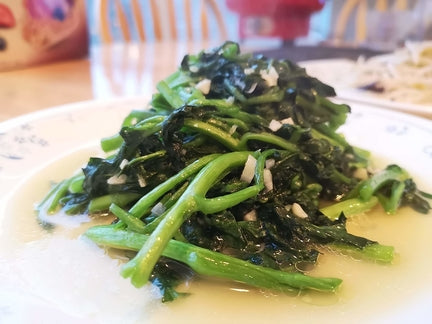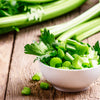3 superfood greens that are more nutritious than kale

For a long time now, we’ve all thought kale was the super food in terms of nutrient density - and it wasn’t that easy for a lot of us to make it past that bitter taste, unfortunately.
But did you know that kale actually ranks 15thin terms of nutrient density in a study recently published by the CDC titled Defining Powerhouse Fruits and Vegetables (PFV): A Nutrient Density Approach? You can find a link to that report below, so that you can read all about the 41 fruits and vegetables that the CDC found to be nutrient powerhouses.
Let’s look at the top 3 "super food" greens that rank higher than kale.
Watercress (nutrient density score of 100)
Watercress might look like a more delicate smallish leaves, but watercress is actually a relative of horseradish and mustard greens and it tastes very peppery, indeed.
Watercress is a member of the cruciferous vegetable family, alongside nutritious vegetables like Brussel’s sprouts, kale, arugula, and broccoli. Plus, it’s packed with so much nutrition it might just qualify as the super food of the decade.
Ranking at 100 in terms of nutrient-density, just one cup of watercress gives you 106% of your vitamin K requirement, and around a fourth of your RDA for vitamins A and C.
Watercress is also a great source of fiber, potassium, protein, calcium, and magnesium and it’s jam-packed with antioxidants and phytonutrients that can protect you against oxidative damage in the form of free radicals, which are associated with aging, cancer, and many other debilitating diseases like Alzhiemer’s.
Scientists have also found that eating watercress daily can reduce DNA damage to blood cells, which is considered to be the hallmark event that triggers the development of cancer. The same study revealed that eating watercress daily improved blood levels of lutein (by 100%) and beta-carotene (by 33%) - 2 phytonutrients which are very protective of the eyes, preventing macular degeneration and cataracts.
Try adding watercress to your salads, pairing it with mild but equally nutritious greens like green leaf lettuce or Bibb lettuce!
Chinese or Napa cabbage (nutrient density score of 91.99)
Napa cabbage is another cruciferous vegetable that is jam-packed with nutrition. Napa cabbage provides 85% of your RDA for vitamin K and over half your RDA for vitamin C.
It’s also rich in nutrients like folate, hard-to-get manganese, and vitamin B6 as well. Cabbage was voted one of two vegetables which can help prevent diabetes (the other being root vegetables). Being a cruciferous vegetable, it’s also proven to help reduce blood markers for inflammation.
Like watercress, Chinese or Napa cabbage is packed with antioxidants and phytonutrients and is currently being researched for its cancer-fighting benefits. One study of Chinese women found that consumption of brassica vegetables like Chinese cabbage helped to significantly reduce breast cancer risk.
Swiss chard (nutrient density score of 89.27)
A nutrient-dense powerhouse, Swiss chard contains 44% of your RDA for vitamin A, 18% of your RDA or vitamin C, and a whopping 374% of your RDA for vitamin K.
Swiss chard is loaded with antioxidants and phytonutrients, including a potent flavonoid called syringic acid, which aids the liver in detoxifying the body, and which helps lower liver enzymes and prevent liver degeneration as well.
Swiss chard is also rich in powerful antioxidants called betalains, which have powerful antioxidant and detoxification properties by supporting the phase II pathways of the liver.
Because it’s so packed with vitamin K, yielding over 3 times your RDA for this nutrient, Swiss chard can help lower blood cytokines, which raise your risk for inflammation and inflammation-based diseases, especially type 2 diabetes.
Editor’s note: The NaturalHealth365 Store offers the finest quality nutritional supplements to support a healthy lifestyle. Click here to shop today!
Sources for this article include:






